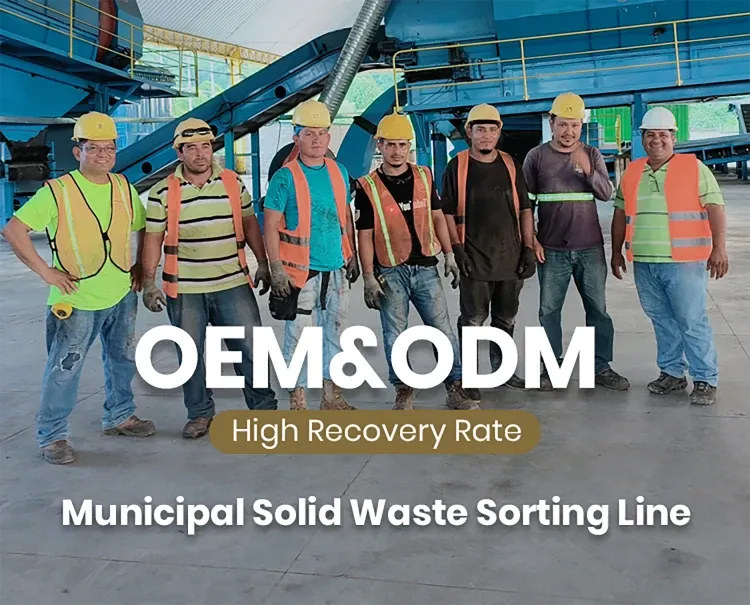

Jul . 23, 2024 14:38 Back to list
Understanding Eddy Current Separator Design Principles and Applications
Eddy current separators are essential devices used in the recycling and waste management industries to efficiently separate non-ferrous metals from mixed material streams. The design of these separators is rooted in electromagnetic principles, particularly the generation of eddy currents, which facilitate the effective sorting of metals such as aluminum, copper, and brass from non-metallic materials.
Principle of Operation
The fundamental principle behind eddy current separators lies in the interaction between conductive materials and magnetic fields. When a non-ferrous metal passes through a rapidly changing magnetic field, it induces circular currents, known as eddy currents, within the metal. This generation of eddy currents creates its own magnetic field, which opposes the original magnetic field, resulting in a force that pushes the metal away from the source of the magnetic field.
Typically, an eddy current separator comprises a conveyor belt that transports the material to be processed. Beneath the belt is a rotating magnetic drum that produces a strong magnetic field. As the material flows over the drum, the non-ferrous metals are propelled away in a different trajectory compared to non-metallic materials. This separation allows for a cleaner and more focused recovery of valuable metals.
Design Considerations
The design of an eddy current separator is pivotal to its efficiency and effectiveness. Several factors must be considered
1. Magnetic Field Configuration The strength, frequency, and configuration of the magnetic field are crucial for optimizing performance. The design may involve using different types of magnets, such as permanent magnets or electromagnetic coils, depending on the application and desired separation efficiency.
2. Drum Design The diameter, length, and rotational speed of the magnetic drum influence the performance of the separator. A larger drum diameter generally provides a stronger eddy current effect, while speed adjustments allow for optimized operational throughput.

3. Material Characteristics The physical characteristics of the materials being processed, such as size, density, and moisture content, affect the design of the separator. For instance, finer materials may require a different belt speed and drum design than bulkier items.
4. Belt Speed and Width The speed at which the conveyor belt moves impacts the time that materials spend within the magnetic field. A balance must be achieved to ensure effective separation without reducing throughput.
5. Feed Distribution Properly distributing the incoming material is essential for consistent separation. Uneven feed can lead to varying performance, with some metals potentially being missed during the separation process.
Applications
Eddy current separators find applications in various industries beyond waste management. They are widely used in metal recycling facilities, electronics recycling, and manufacturing processes where non-ferrous metal recovery is necessary. Their ability to sort metals from plastics and other materials enhances recycling efficiency and contributes to resource conservation.
In addition to recycling, these separators are employed in mining operations to reduce metal contamination of ores and in the automotive industry to reclaim valuable metals from scrap. Their versatility and effectiveness make them indispensable in modern material processing.
Conclusion
The design of eddy current separators revolves around the principles of electromagnetism and operational efficiency. With careful consideration of design parameters and application requirements, these devices play a crucial role in enhancing metal recovery, promoting recycling efforts, and reducing waste. As technologies evolve, innovations in eddy current separator design will likely continue to improve their effectiveness, paving the way for a more sustainable future.
Latest news
Troubleshooting Common Eddy Separator Problems
NewsJul.04,2025
The Role of Metal Recycling Plants in Circular Economy
NewsJul.04,2025
The Impact of Recycling Line Pickers on Waste Management Costs
NewsJul.04,2025
Safety Features Every Metal Shredder Should Have
NewsJul.04,2025
How Industrial Shredders Improve Waste Management Systems
NewsJul.04,2025
How Cable Granulators Contribute to Sustainable Recycling
NewsJul.04,2025